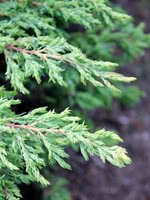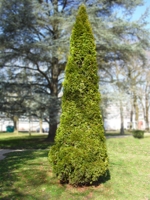Mon-Fri 9am - 5pm Mountain time
Common Juniper vs Emerald Cedar
Juniperus communis
Thuja occidentalis Smaragd
NOT AVAILABLE THIS SEASON - MIGHT RETURN
NOT AVAILABLE THIS SEASON - MIGHT RETURN
Common Juniper is a wide spreading, coniferous shrub with scaly needles and small, berry-like cones. Used as a landscaping shrub, it typically grows 3 or 4 feet tall and will not spread like Creeping Juniper.
You can plant Common Juniper near building foundations or beneath larger trees to provide year-round color and texture to your yard with minimal maintenance.
Emerald Cedar makes a great addition to landscapes, and is often used to form tight hedges or privacy screens. The thick scale-like foliage adds texture and colour to yards and is commonly used to line driveways. Unlike other cedars it retains its green colour throughout the fall and winter.
It is a semi dwarf species, which generally needs little pruning, but if desired it responds well to trimming. Its attractive, columnar shape and dense foliage makes it a desired landscape feature.
The Emerald Cedar won the award of merit from the Royal Horticultural Society.

